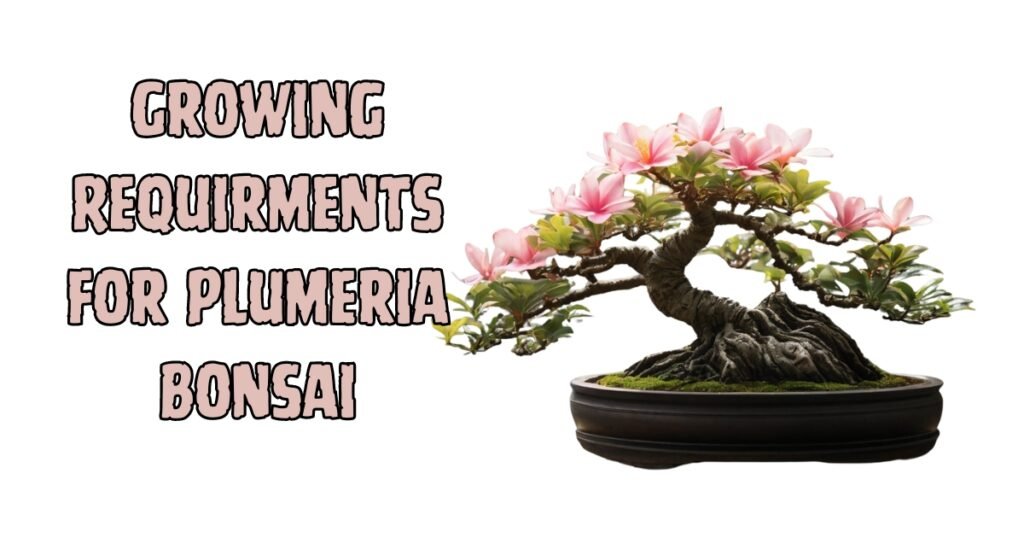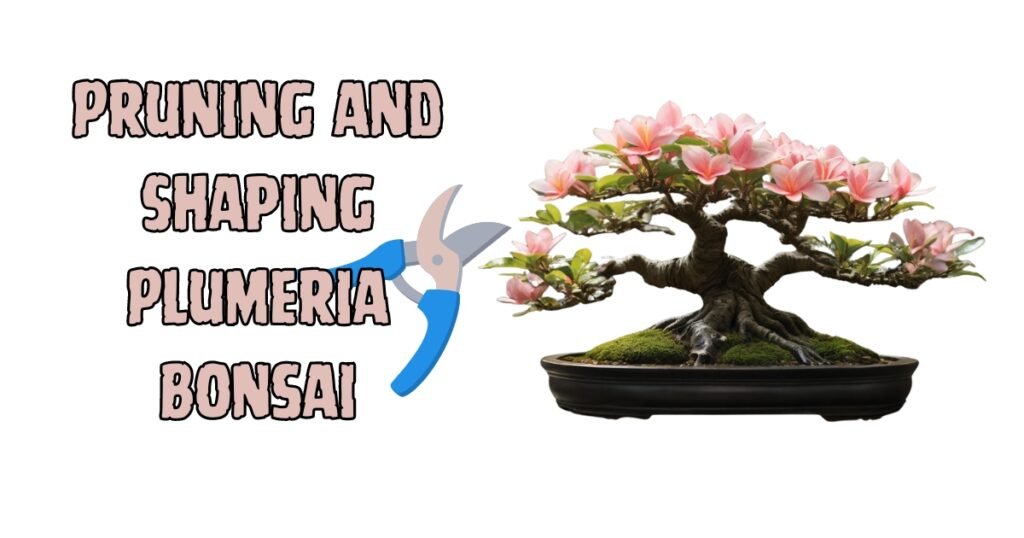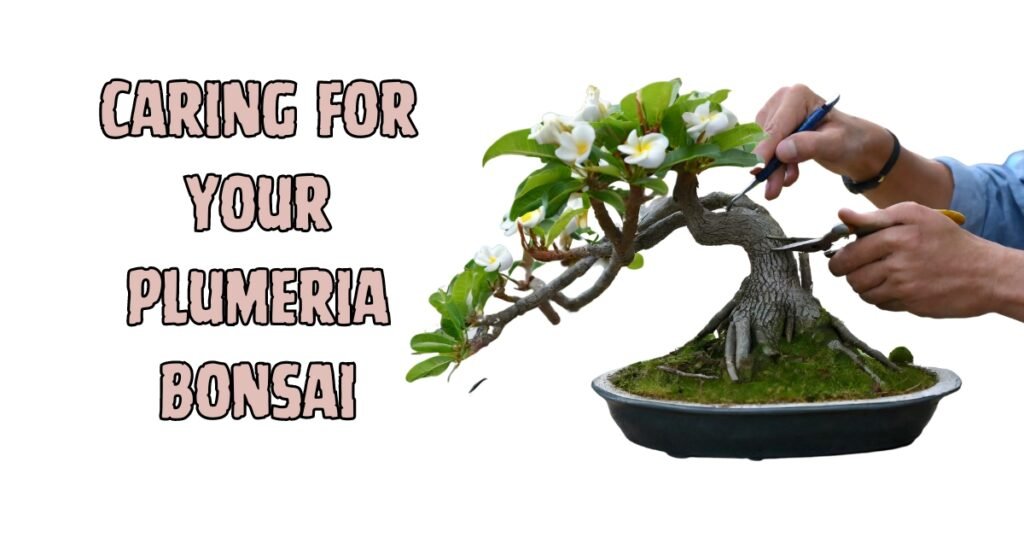General Information
Plumeria, or Frangipani, is a tropical plant with beautiful flowers and a pleasant aroma. Although it’s a good choice for bonsai because of its appearance, its large leaves can be challenging. Bonsai involves reducing the scale of the entire tree, including the leaves. However, Plumeria leaves need to concentrate better, disrupting the balance and proportion bonsai aims to achieve.
Enthusiasts have found a way to work around the issue of Plumeria bonsai by creating a multi-trunked or forest-style arrangement, which is visually pleasing.
To care for a Plumeria bonsai:
- Follow general bonsai practices.
- Since it’s a tropical plant, make sure it gets enough sunlight and warmth.
- Be careful not to overwater it, as Plumeria is sensitive to that.
- Ensure that the soil drains well.
You can grow Plumeria trees from seeds, an excellent project for starting a Plumeria bonsai from scratch.
Plumeria bonsai can be challenging to cultivate but can result in a one-of-a-kind and breathtaking living artwork.
Growing Requirments for Plumeria Bonsai
To grow a Plumeria Bonsai successfully, you must pay close attention to its specific requirements. Here are the essential factors to consider.

- Sunlight: Plumeria Bonsai needs at least 6 hours of direct sunlight to thrive.
- Watering: To keep plumerias healthy, make sure the soil drains well and water only when it’s dry. Overwatering can harm tropical plants like plumerias.
- Fertilizing: Use a high-phosphorous fertilizer like Grow More Hawaiian Bud & Bloom for better flower bud formation, and apply it every 2-3 weeks.
- Temperature: Plumeria requires a frost-free environment to grow well. If you live in a cold area, increase your Plumeria Bonsai indoors or protect it during winter.
- Pruning and Training: To develop ramification on a “tree” scale, apply standard bonsai practices, such as regular pruning for shaping and wiring for growth direction.
- Repotting: To maintain a healthy Plumeria Bonsai yearly, use well-drained soil to prevent root rot, as Plumeria roots multiply and don’t thrive when pot-bound.
Plumeria is not a typical bonsai due to its large leaves, so it requires extra care and creativity to maintain its desired aesthetic.
Pruning and Shaping Plumeria Bonsai
Pruning and shaping are crucial to care for and develop a Plumeria bonsai. Follow these steps and tips to do it correctly.

Pruning
- Timing: Prune Plumeria in early spring, before new growth begins, for quick healing and energy directed towards further growth.
- Technique: Use clean, sharp shears to cut at a 45-degree angle, about 1/4 inch above a leaf node. Doing so will encourage the plant to produce new branches at that point.
- Branch Selection: To maintain a plant’s balanced and visually appealing shape, prune it regularly. This includes removing any branches that cross or grow inward and those that disrupt the desired shape.
Shaping
- Wiring: Use bonsai wire to guide branch growth by wrapping it around the branch and gently bending it in the desired direction, careful not to damage the bark.
- Leaf Reduction: Plumeria leaves don’t reduce well, making maintaining scale in a bonsai difficult. Some suggest defoliating the tree to encourage more negligible leaf growth, but this should be done sparingly and cautiously.
- Maintenance: Check your Plumeria bonsai regularly for any unwanted growth and prune as necessary to maintain the desired shape. Keep an eye on wired branches to avoid wire cutting into the bark.
Growing bonsai requires patience, particularly with challenging species like Plumeria. It may take several years to achieve the desired shape and size. Remember, patience is vital.
Caring for Your Plumeria Bonsai
To keep your Plumeria bonsai healthy and thriving, be consistent in maintaining these essential factors:

Watering: Plumeria plants need moderate watering. Let the soil dry out slightly between waterings, but take your time. Overwatering can cause root rot, while underwatering can cause leaves to wilt or drop.
Fertilizing: To encourage flower bud formation, use a high-phosphorus fertilizer. Apply it every 2-3 weeks during the growing season.
Sunlight: Place your plumeria bonsai in a spot that receives at least six hours of direct sunlight daily for optimal growth.
Temperature: Plumeria bonsai plants require warm temperatures above 50°F (10°C) to thrive. If you live in a colder climate, bring them indoors during winter.
Pruning and Shaping: To keep the bonsai in shape, it’s essential to prune regularly. This involves removing unnecessary branches and leaves. You can also use bonsai wire to direct the growth of branches.
Repotting: It is recommended to report Plumeria bonsai yearly due to their rapidly multiplying roots and dislike of being pot-bound. To prevent root rot, use well-drained soil during repotting.
Pest Control: Watch for aphids, spider mites, and whiteflies on your bonsai. If you spot any pests, treat them with insecticide or pest control.
Remember that each Plumeria bonsai is different and may require slightly different care. Regularly check on your plant and modify your care routine accordingly.
Challenges to Overcome When Growing Plumeria Bonsai: Tips and Tricks.
To grow a Plumeria bonsai successfully, you need to overcome some challenges. Here are some common challenges and ways to overcome them.
Large Leaves: Growing a Plumeria as a bonsai can be challenging due to the size of its leaves. Regular pruning and leaf reduction techniques can be used to maintain the desired scale. However, it’s important to note that Plumeria leaves don’t reduce well, so use these techniques sparingly and cautiously.
Pests and Diseases: Plumeria plants are vulnerable to Black tips, Rust fungi, root rot, spider mites, mealybugs, and scale insects. To ensure their good health, it’s crucial to keep a close eye and take prompt action if you detect any pests or signs of disease. Use a suitable insecticide or fungicide to treat your bonsai in such cases.
Light Requirements: Plumeria bonsai requires at least six hours of sunlight daily to avoid yellow leaves. Please place it in a location with plenty of sun to thrive.
Irritating Sap: When dealing with Plumeria, wear gloves and eye protection for your skin and eyes. The sap from the plant can irritate.
Flower Production: To boost the flower production of your Plumeria, use a high-phosphorus fertilizer that can aid in flower bud formation.
Overgrowth or Leaning: Prune your Plumeria bonsai regularly to avoid overgrowth, and use bonsai wire to direct branch growth.
Growing bonsai requires patience, consistent care, and time. It can take several years to achieve the desired shape and size, especially with a challenging species like Plumeria.
Conclusion
This guide covers everything you need to know to grow and care for a Plumeria Bonsai, from selecting the suitable species to pruning and shaping. You’ll also learn how to properly water, feed, and protect your bonsai from pests and diseases and advanced tips and tricks for optimal growth. Remember, growing a Plumeria Bonsai is a journey that requires patience, learning, and enjoyment. Take it one step at a time, learn from your mistakes, and soon, you’ll have a beautiful and healthy Plumeria Bonsai. Happy growing!
Frequently Asked Questions (FAQs) about Plumeria Bonsai
How often should I water my Plumeria Bonsai?
Water your Plumeria Bonsai thoroughly until water runs out of the drainage holes. Then, let the soil dry out before watering again. Overwatering can lead to root rot.
What kind of fertilizer should I use for my Plumeria Bonsai?
Feed your Plumeria Bonsai with a balanced, water-soluble fertilizer every two weeks during the growing season. In the dormant season, reduce feeding to once a month.
How can I protect my Plumeria Bonsai from pests and diseases?
Regularly inspect your bonsai for any signs of pests and diseases. If you notice any, treat your bonsai with a mild insecticidal soap or neem oil for pests and a fungicide for diseases.
When is the best time to prune my Plumeria Bonsai?
The best time to prune your Plumeria Bonsai is early spring at the start of the growing season.
What are the most common mistakes to avoid when caring for a Plumeria Bonsai?
Common mistakes include overwatering, not providing enough sunlight, ignoring signs of pests and diseases, and improper pruning. Always remember to water adequately, provide plenty of light, inspect regularly for pests and diseases, and use sharp tools to make clean cuts when pruning.
Further Reading and Resources
- Mastering the Art of Tiger Bark Ficus Bonsai: A Comprehensive Guide
- Mastering the Art of Bougainvillea Bonsai Tree Care: An Ultimate Guide
- The Vibrant World of Sumac Bonsai: A Comprehensive Guide
- Mastering the Art of Parsoni Juniper Bonsai: From Seedling to Showpiece
- Mastering the Art of Cultivating Bodhi Tree Bonsai (Ficus Religiosa): A Comprehensive
- The Charming Lemon Cypress Bonsai: A Comprehensive Guide





